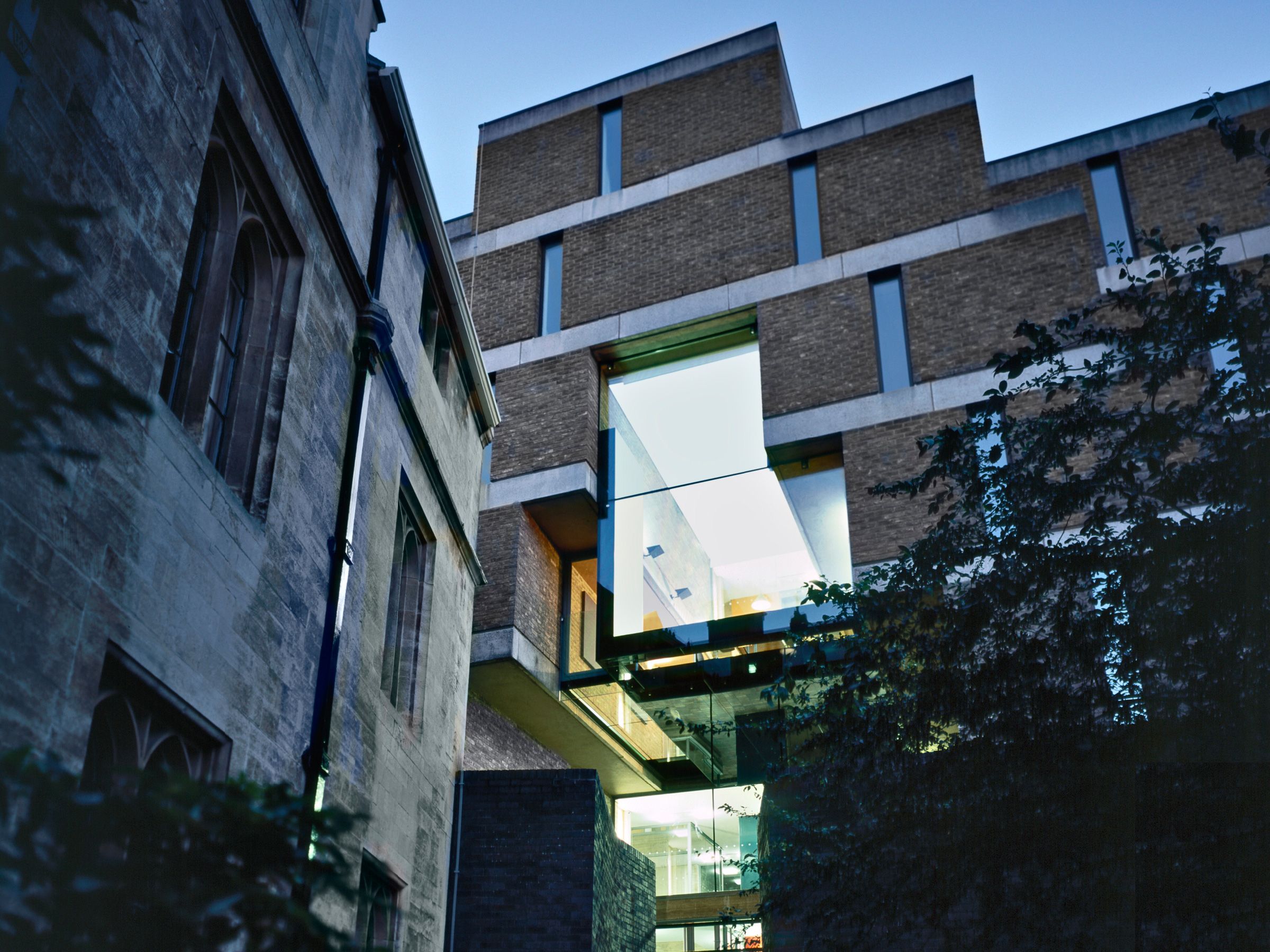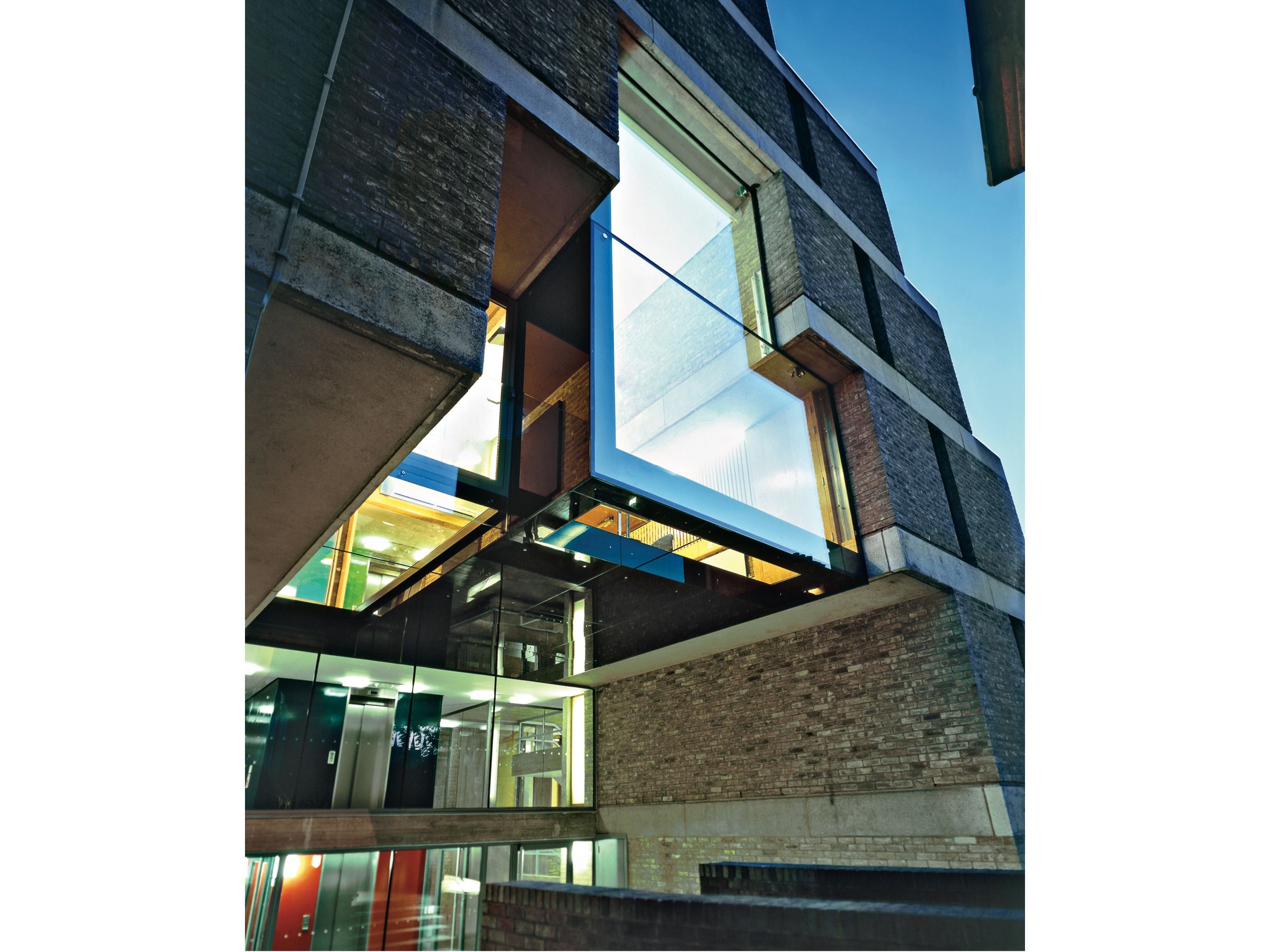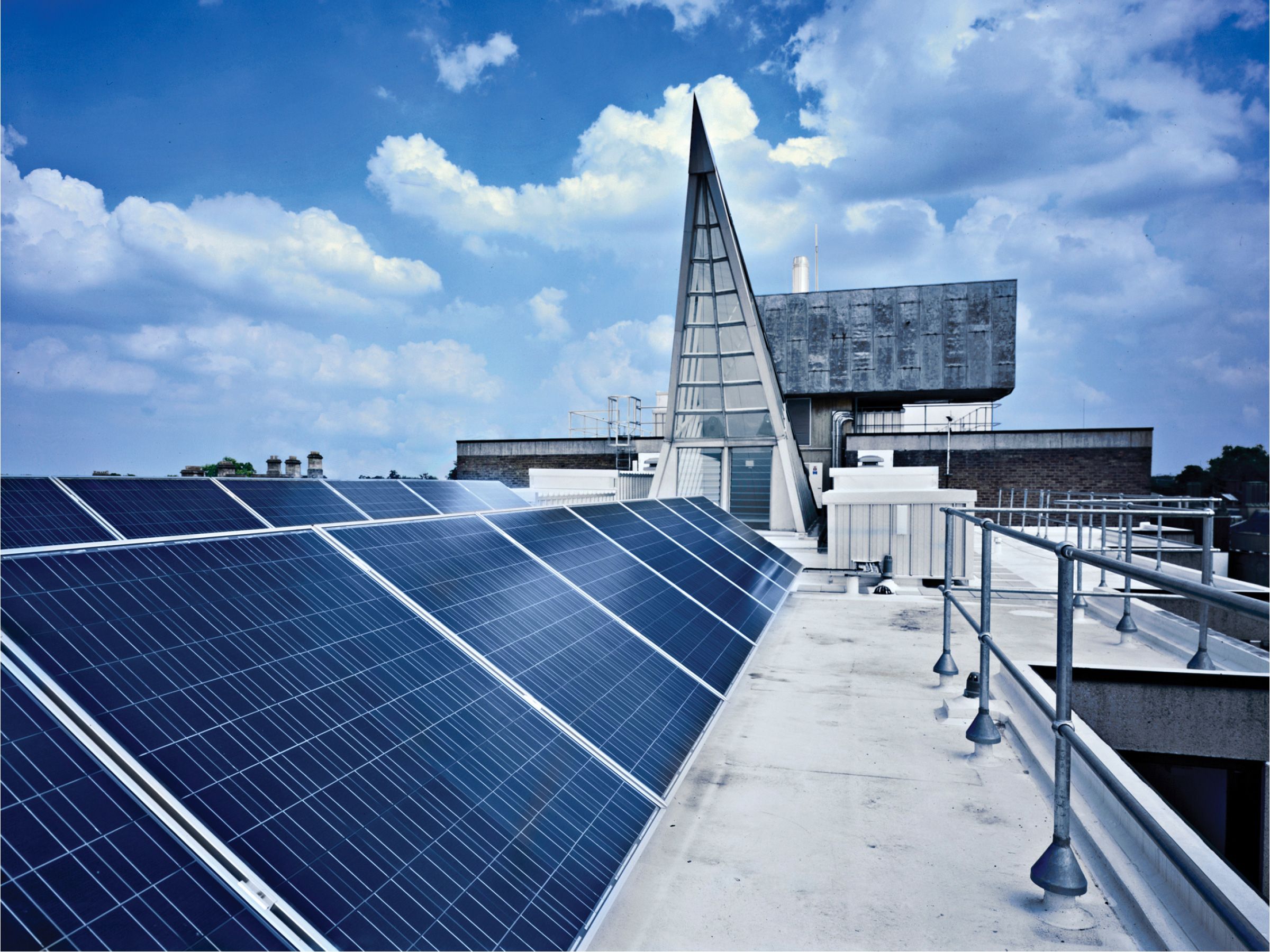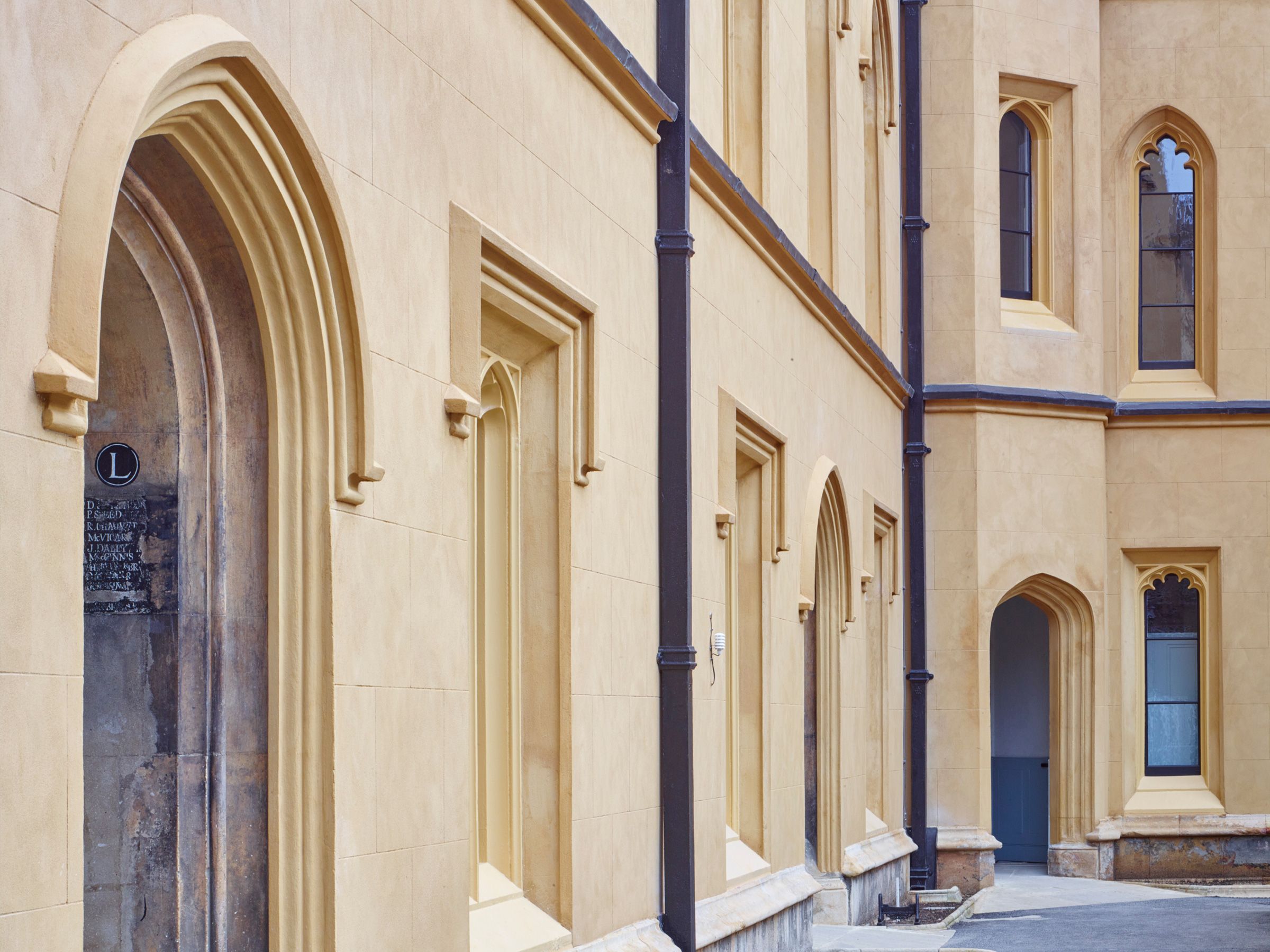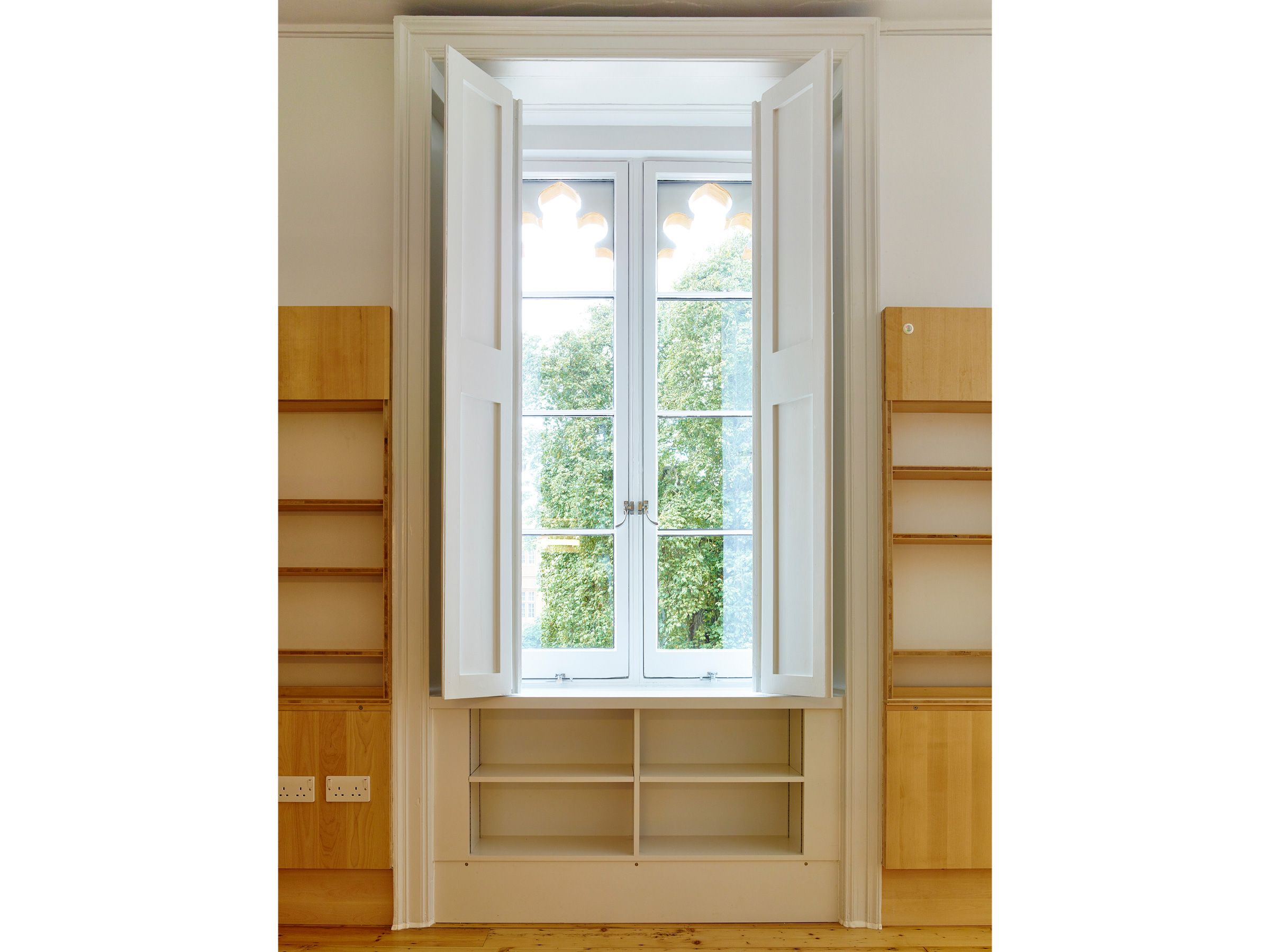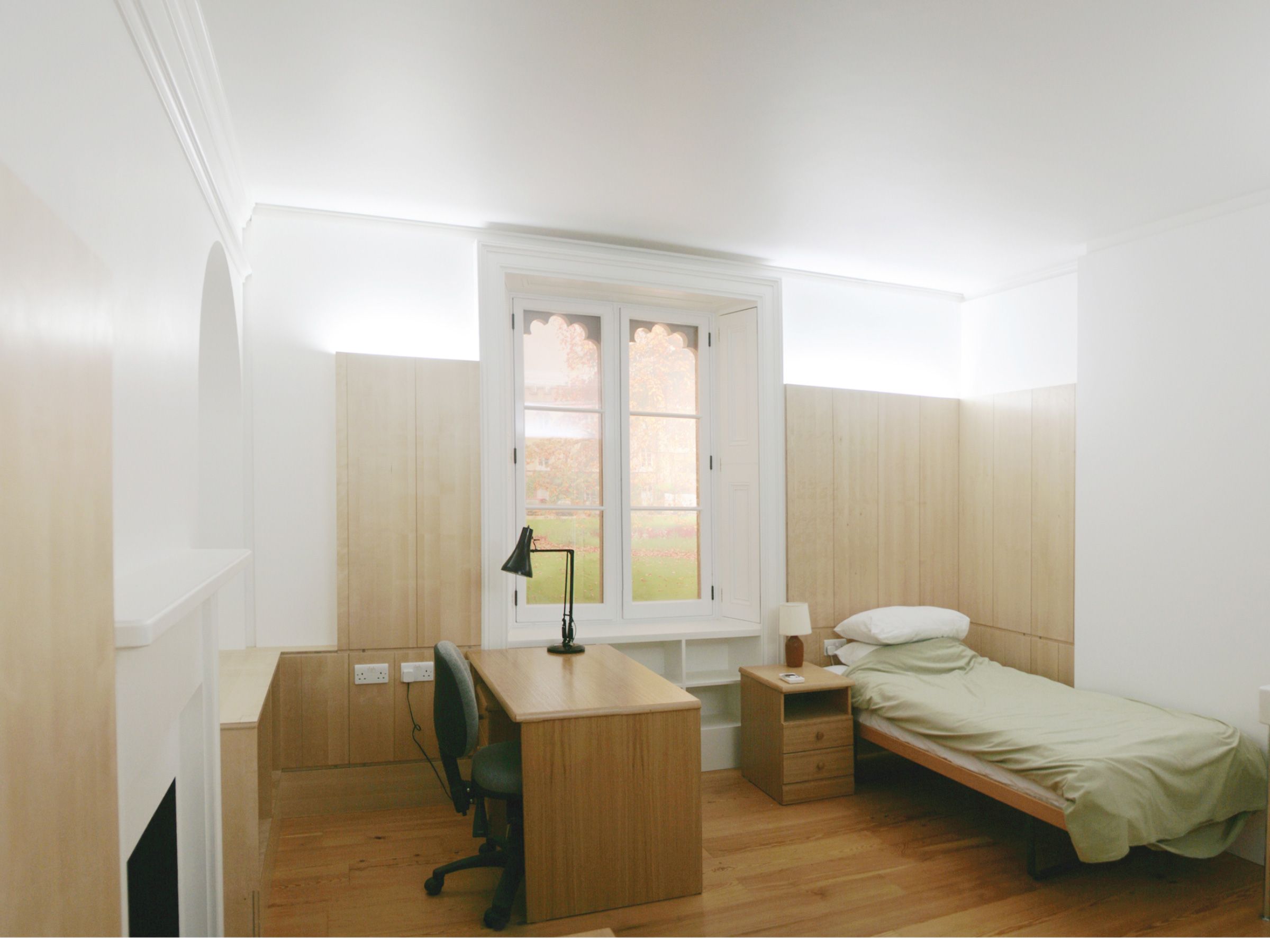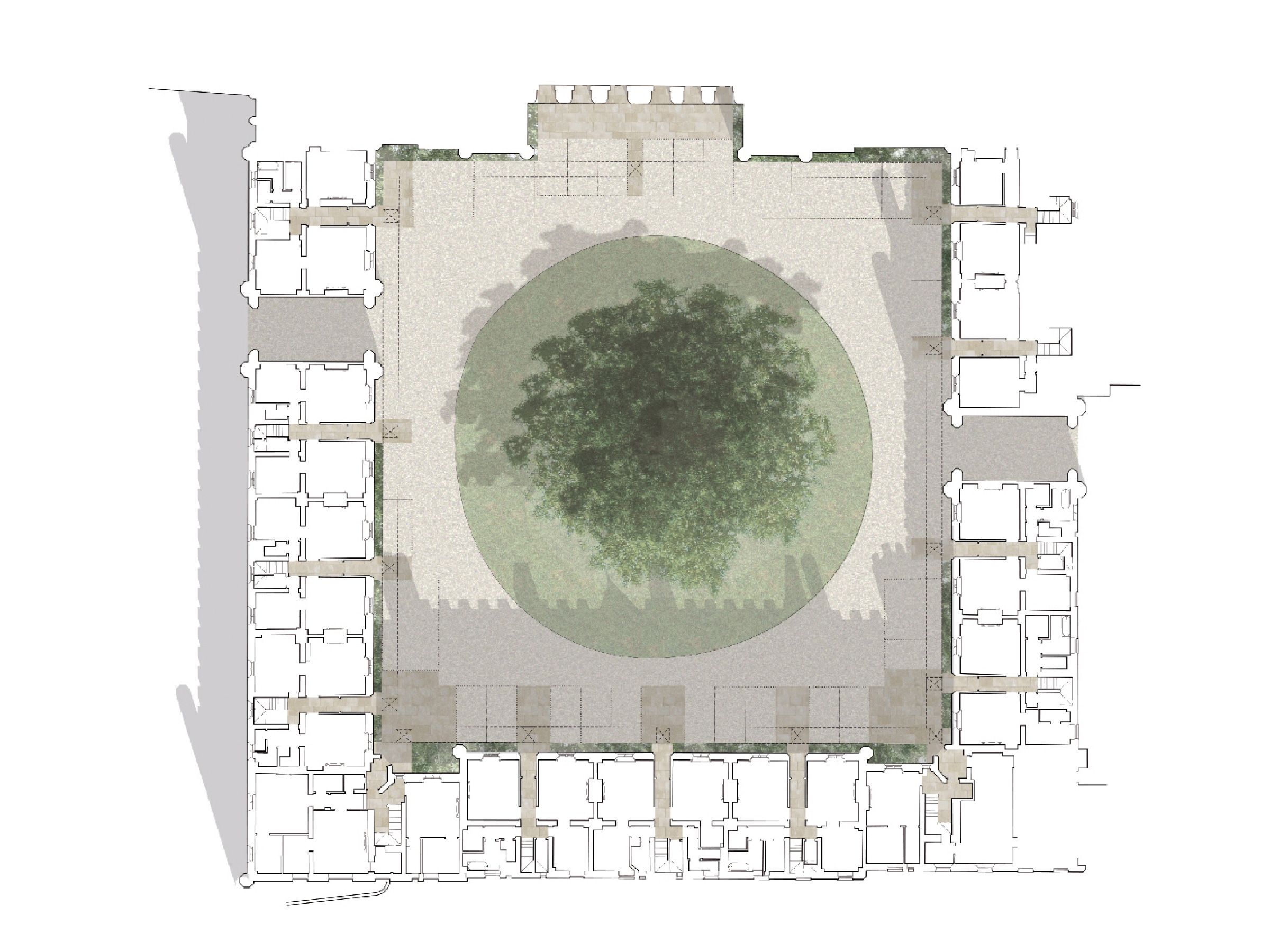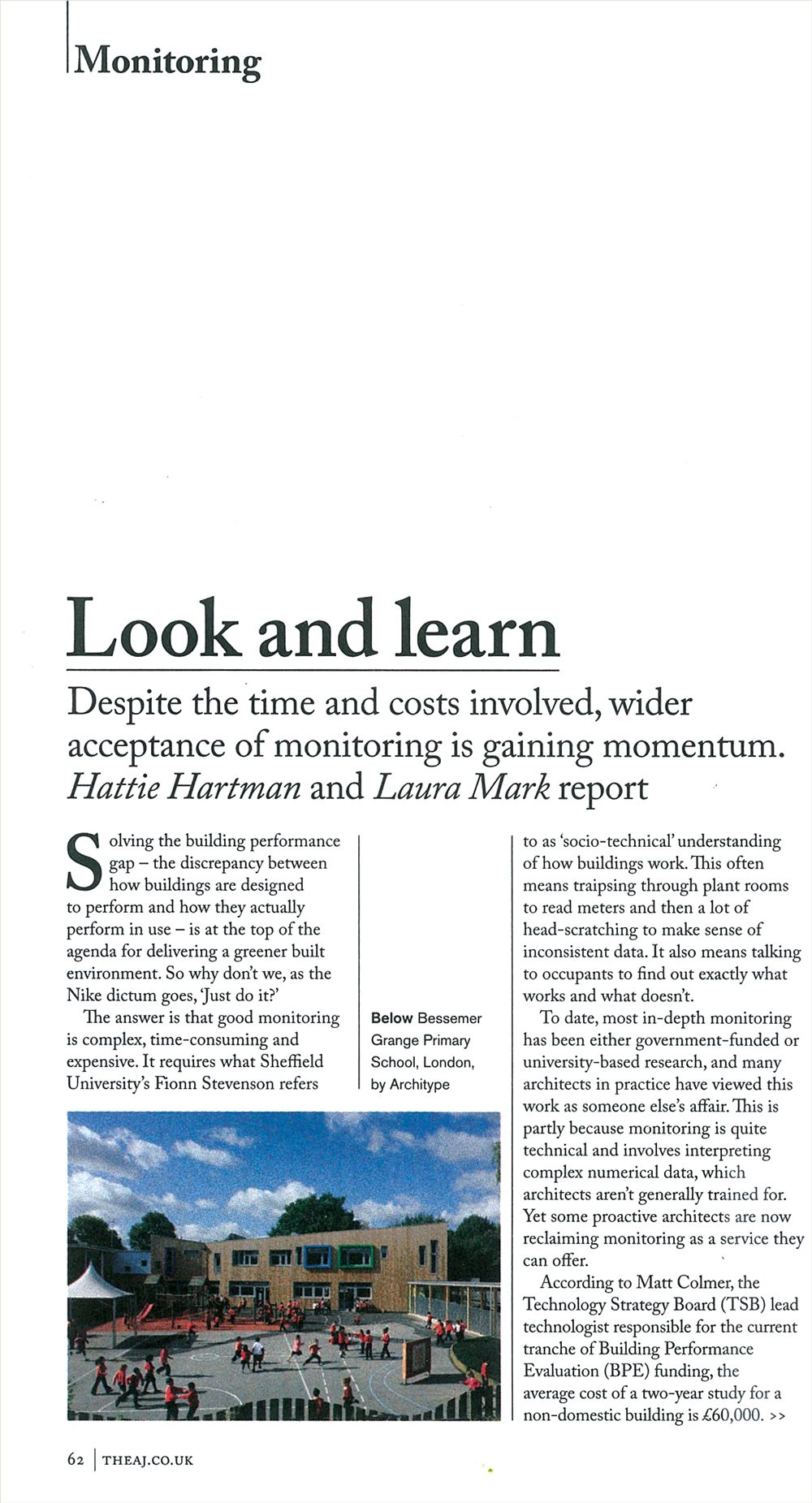The refurbishment of New Court represents the fourth in a series of projects for Trinity College, Cambridge. This continued working relationship encompasses a range of scales and concerns, from strategic design and College estate studies, to carefully made contemporary interventions within existing buildings. All of these projects use incisive analysis and innovative design to reconcile the needs of the client and end user, with the demands made by high benchmarks for quality and heritage significance.
1. Site-wide maintenance strategy: 2003 Audit and planning of maintenance facilities to rationalise accommodation and practices, improving efficiency and liberating, for other college uses, valuable accommodation at the heart of the College.
2. Fellows’ Parlour: 2004 Expansion of the historic Parlour, with a contemporary space built against the exposed, listed walls of Nevile’s Court.
3. Wolfson Building: 2006 Refurbishment of an existing, curtilage-listed building, with new service installations and renewable generation. Formation of new social and teaching spaces as a contrast to the minimal provision of the 60’s original.
4. New Court: 2016 New Court is a Grade I listed building, completed by William Wilkins in 1825. The proposals described below – for the comprehensive refurbishment and remodelling of the existing buildings – received Listed Buildings Consent in 2013, and have recently been completed.
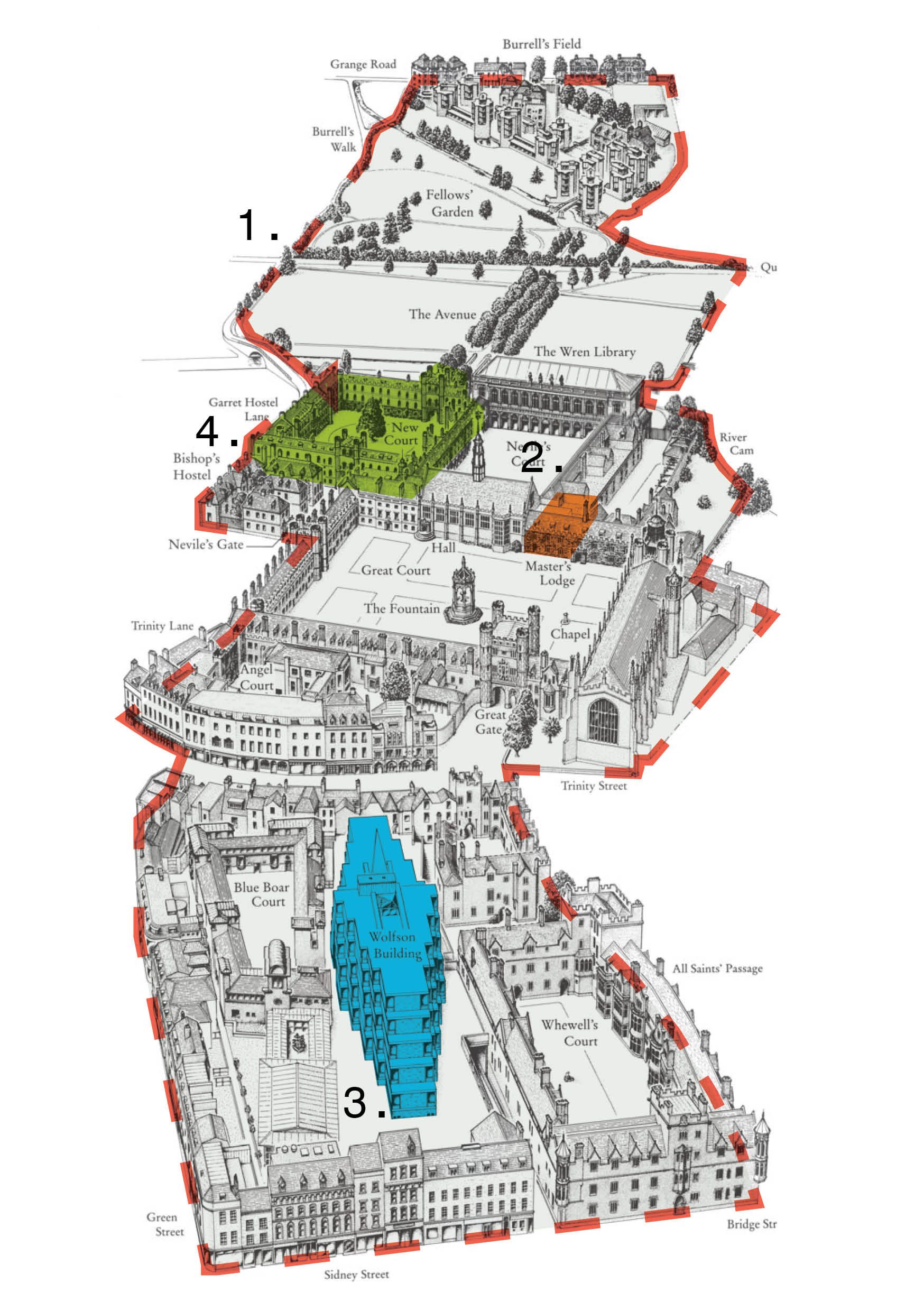
New Court Renovation
This project provided 169 highly sustainable student rooms within a Grade I Listed building, and set a benchmark for the reconciliation of the otherwise apparently conflicting ambitions of sustainability and heritage.
Located at the heart of Trinity College – between The Backs, the Wren Library and Great Court – New Court houses a large proportion of the College’s second and third year undergraduates – as well as graduates and Fellows, and a number of teaching rooms and offices.
Trinity College, an institution with an almost uniquely long-term outlook, viewed the sustainable refurbishment of New Court both pragmatically – as a way of providing critical upgrades to the facilities and comfort offered by the building – and, more broadly, as a means of developing a sustainable approach to the retrofit of its historic estate. The project explored the changing territory of heritage policy in relation to the climate change agenda and made a significant contribution to the knowledge base and understanding that underpins this ongoing debate.
Trinity’s plans are just the kind of radical and inventive ideas worthy of the great thinkers Cambridge has produced.
Sarah Lonsdale, The Sunday Telegraph

1. Character and Comfort The proposals provided 169 student study bedrooms with appropriate shared and ensuite facilities, as well as accessible suites, Fellows’ teaching sets, and tutorial offices. All existing service installations were replaced with new heating, hot and cold water, power, lighting, data pipes and cables within fully-accessible distribution routes.
2. Sustainability: Fabric and systems The integrated package of works reduced the energy consumption and carbon emissions by 75% and 88% respectively. These ground-breaking proposals were based on extensive building-physics studies and detailed 3D modelling, carried out to demonstrate that there will be no harmful impact on either the fabric or character of the historic building.
3. Facade: Renewal of fabric Reinstatement of the original material, hue and texture of the render facing has restored some of the historic character of this court, undermined by successive historical interventions, most notably those of the 1970’s.
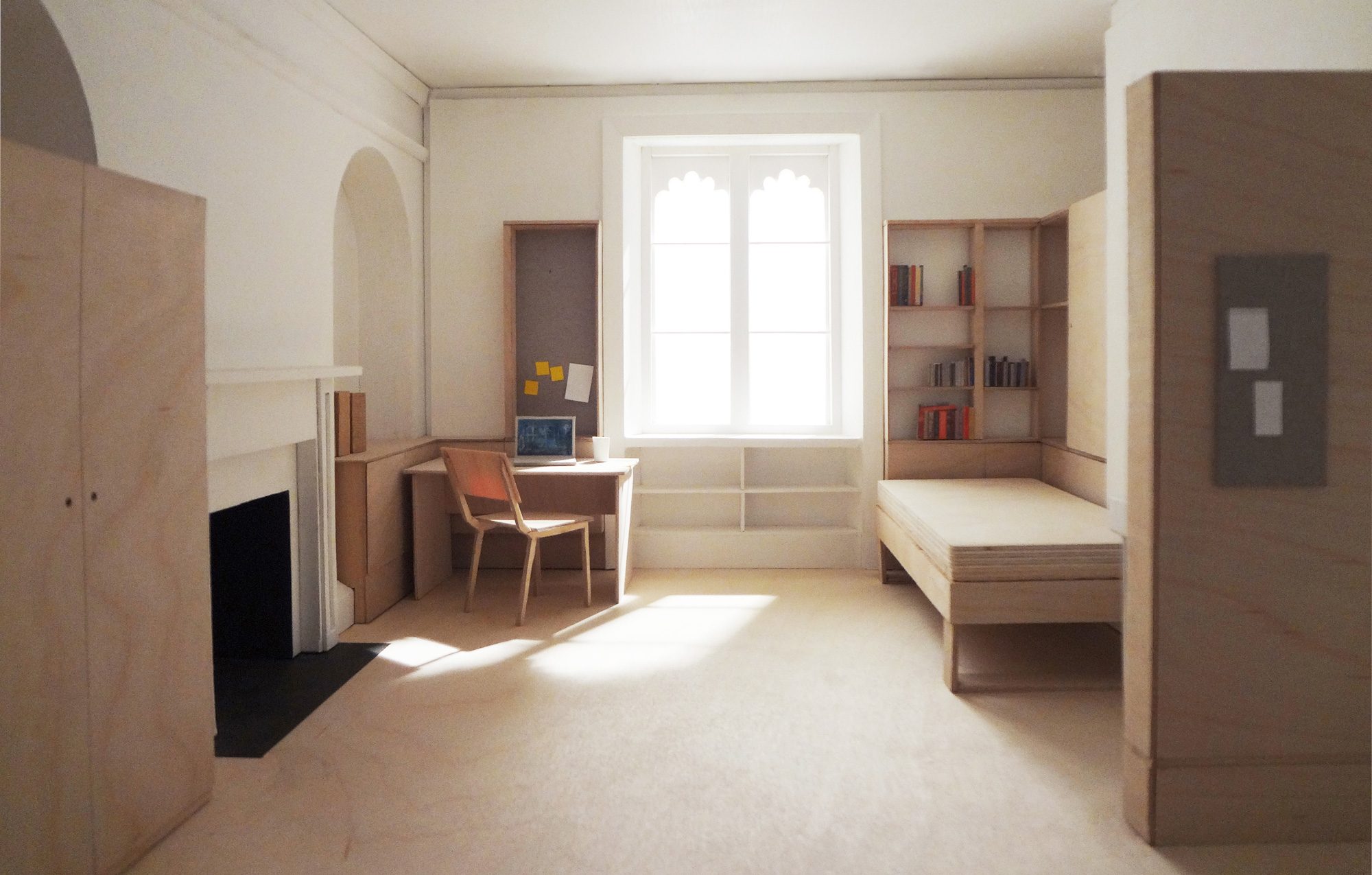
Awards
Civic Trust Awards

Architecture Today Awards
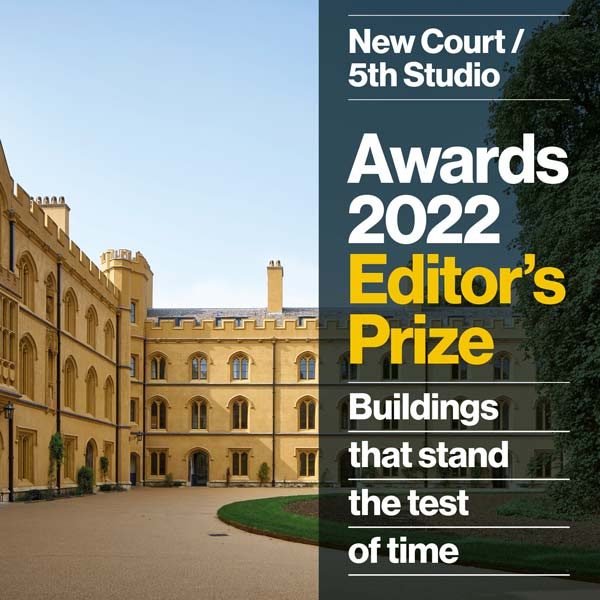
RIBA Award

AJ Retrofit Award
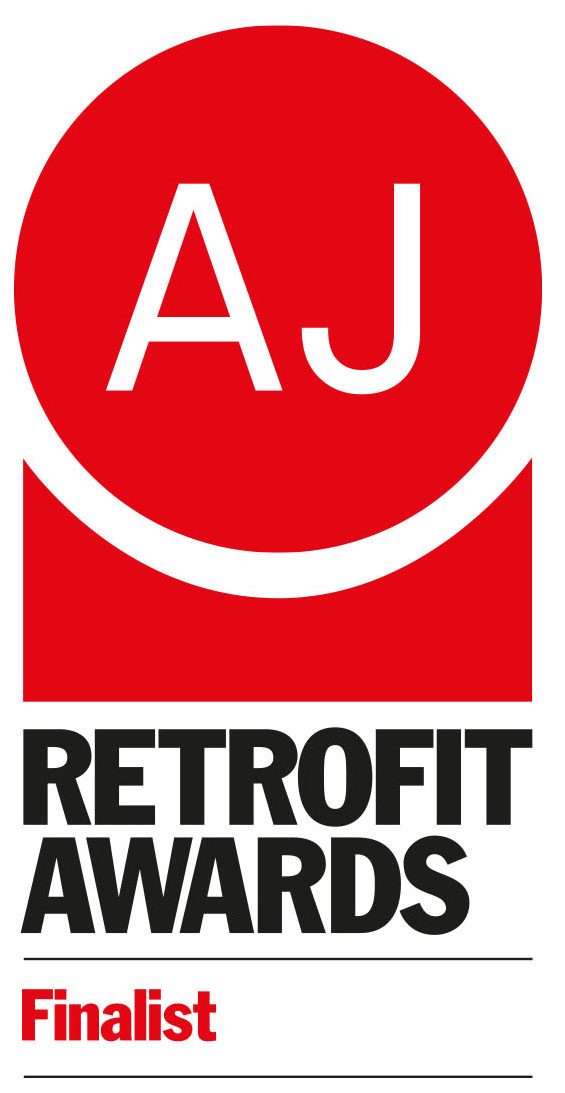
Sustainability; Cambridge Design and Construction Awards
David Urwin Award

Conservation, Alteration or Extension to an Existing Building; Cambridge Design and Construction Awards
